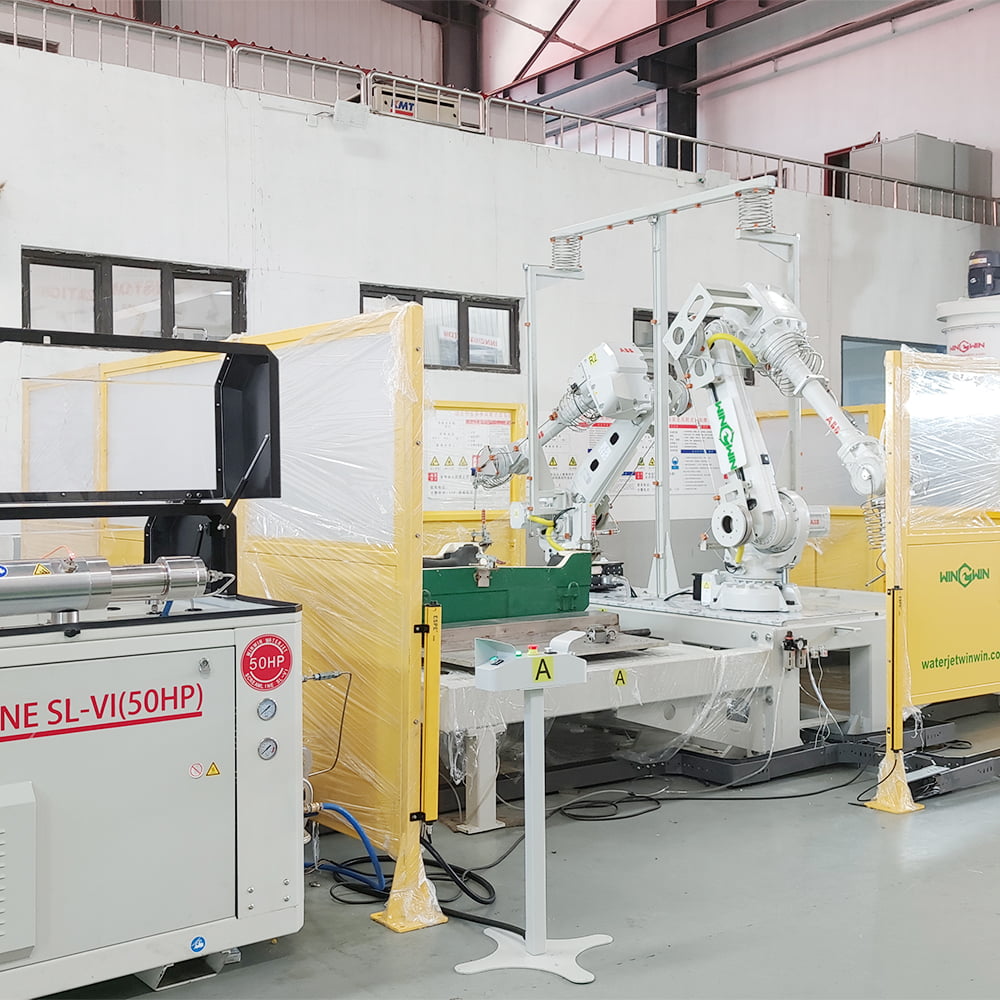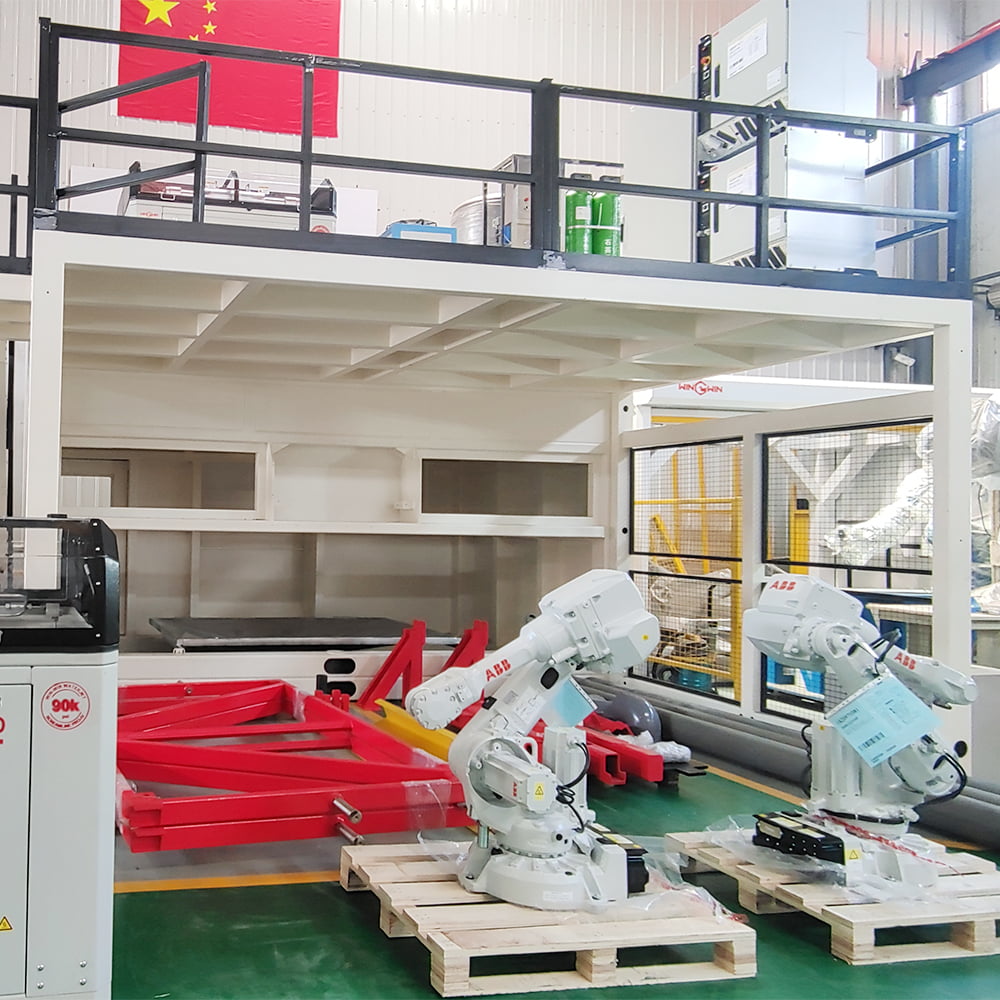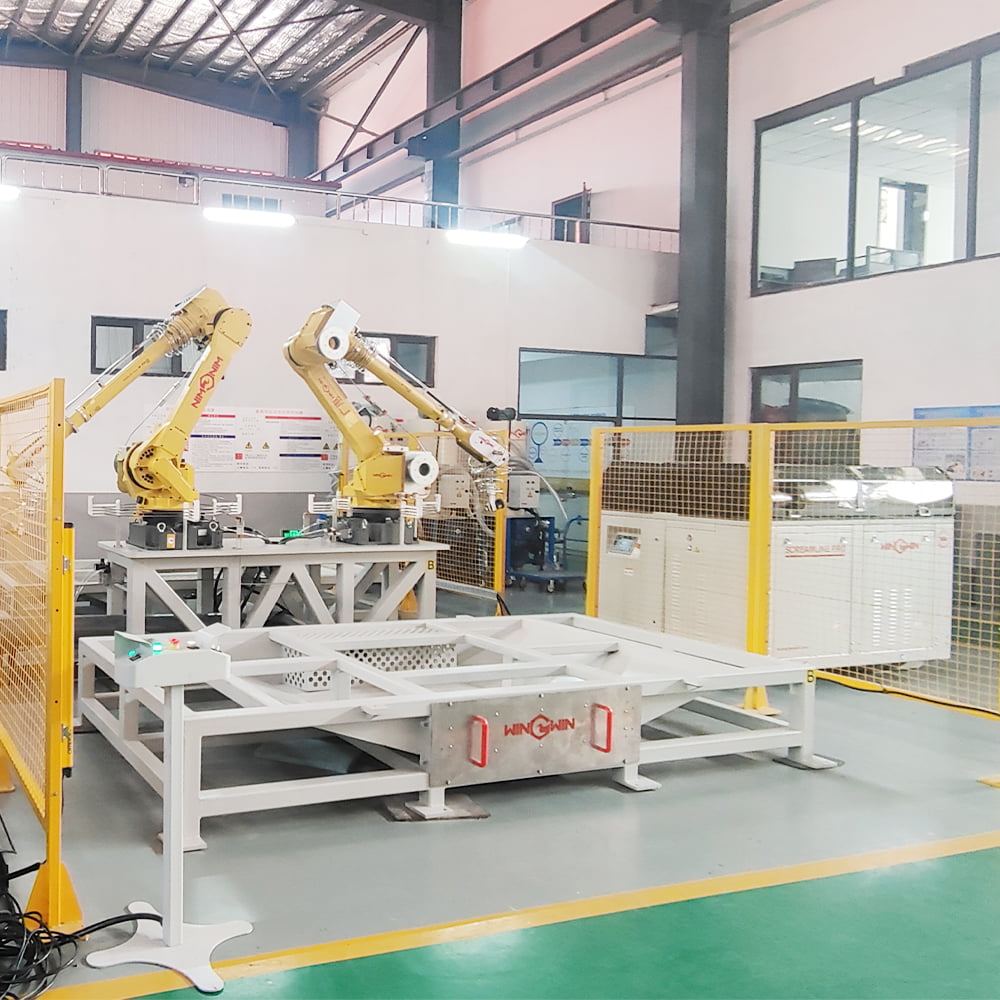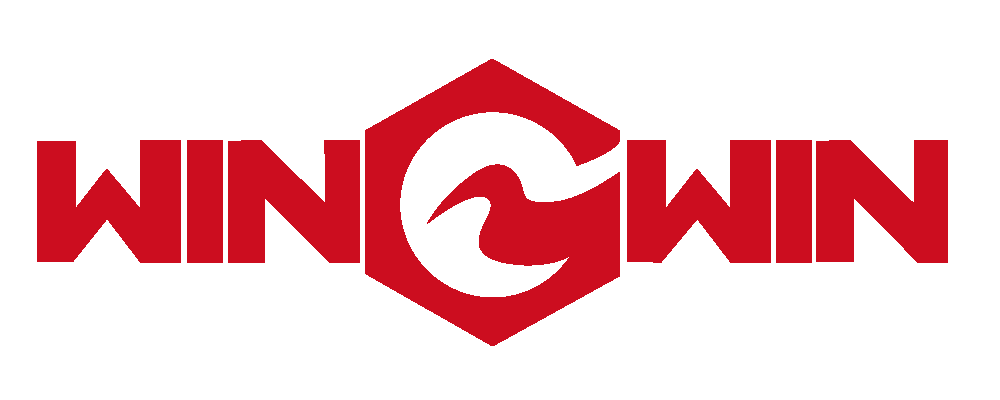New Type of Robot Waterjet Cutting Solution
The Main Devices of the robot waterjet cutting solution:
1, Robot waterjet cutting solution with rotary and fliping cutting table.
2, Two ceiling type of ABB IRB2600 robot arms.
3, Fully Enclosed house design.
4, SCREAMLINE SL-VI (50HP) Intensfier Pump.
All these configurations are very advanced, resulting in a robot waterjet cutting solution that is intelligent, versatile, user-friendly, convenient and highly productive.
All these configurations are very advanced, resulting in a robot waterjet cutting solution that is intelligent, versatile, user-friendly, convenient and highly productive.
This is the second time for Pelzer Spain to reorder the product, they purchased a set of equipment from our company in February last year and after using the equipment, the feedback is very good, and then ordered a set of equipment again in July this year.
We have a long term relationship with Pelzer Spain, we have been maintaining good cooperation, from parts to the whole robot waterjet cutting solution, the general manager of Pelzer Spain commented to us “Win-Win is a trustworthy partner”.
What are the specific advantages of the robot waterjet cutting solution for rotary and flip cutting table?
The rotary and flip cutting table waterjet robotic workstation integrates a high degree of automation and precision cutting technology, and this structure provides a range of advantages in waterjet cutting:
1. Multi-Angle Cutting: While traditional water jet cutting machines operate mainly along the X and Y axes, the rotary and fliping cutting table allows the robot to cut in multiple directions, making cutting more flexible and diverse.
2. Increased productivity: The ability to cut at multiple angles reduces the number of times the workpiece has to be repositioned, thus reducing overall production time.
3. Accuracy and quality: Compared to traditional water jet cutting machines, the rotary and flip cutting table design provides higher cutting accuracy, especially in complex parts and shapes.
4. Reduced post-processing: As a result of the improved accuracy and quality of the cut, post-processing requirements may be reduced, further increasing productivity and reducing costs.
5. Material savings: The ability to swivel and tilt allows for more precise positioning and cutting of material, which can reduce material waste and improve material utilization.
6. Expanded application range: The flexibility of the table allows for an expanded range of water jet cutting applications, allowing for more complex workpieces and materials to be handled.
7. Increased safety: Due to the precise control and predictability of the robot, this automated solution provides a higher level of safety compared to manual operations.
8. Labor savings: A high degree of automation means that fewer operator interventions are required, resulting in lower labor costs.
In conclusion, the robot waterjet cutting solution with a rotary and fliping cutting table offers manufacturers an efficient, high-quality and highly automated cutting solution. The development and application of this technology is expected to further drive the popularity and adoption of water jet cutting technology in various industries.
More information about the robot waterjet cutting solution can be found at the following link.
https://www.youtube.com/channel/UC-D9PKZlhw2fZhMnnzefcgQ
The below are some robot waterjet cutting solution cases from us.



So how should we choose the right type of waterjet cutting robot for our production? Pedestal type, ceiling type or side mounted type?
A waterjet cutting robot is a type of robot that utilizes a high-pressure water jet for cutting. There are several key factors to consider when choosing the right type of robot waterjet cutting solution for production:
Area of application and type of workpiece:
Pedestal type: suitable for cutting large, heavy workpieces as they usually have a large workspace. If your application deals mainly with large parts, a pedestal type robot may be the best choice.
Ceiling type: Because it can be hung ceiling type above the structure, it can make better use of the workspace in some applications, especially when floor space is limited or when there is a need to have no obstruction underneath.
Side-mounted: Suitable for medium-sized workpieces, it combines the features of the pedestal and ceiling models to provide a greater horizontal working range.
Space and layout constraints:
The size, shape and layout of your production space may affect the type of robot you choose. For example, if floor space is limited, you may want to consider an inverted mount.
Work range and accessibility:
Depending on the size and shape of the workpiece, consider the working range and accessibility of the robot. For example, an inverted or side-mounted model may offer better cutting angles and accessibility for certain complex workpieces.
Load capacity:
Consider the weight of the waterjet cutting head and cutting system. Ensure that the chosen robot model can support the additional load.
Safety:
Consider the robot’s operating position and the presence of interaction with employees. Some configurations may be better suited for fully enclosed environments, while others may be easier for operators to access.
Economy and cost:
The cost of different types of waterjet cutting robots may vary. Ensure that costs and return on investment are considered while meeting production needs.
Aftercare:
Consider the ease of maintaining the robot and routine maintenance. For example, certain configurations may be easier to maintain and replace parts.
Finally, it is recommended that you have an in-depth conversation with the supplier or manufacturer of your waterjet cutting robot to get their professional advice on the type of robot that is best suited for you based on your specific production needs and constraints.
If you are interested in robot waterjet cutting solution, contact me please.

